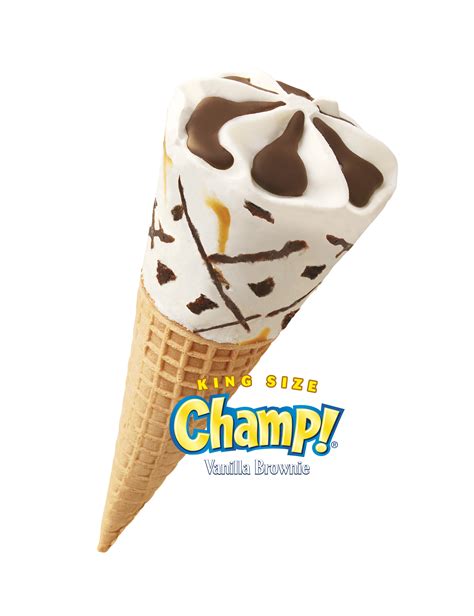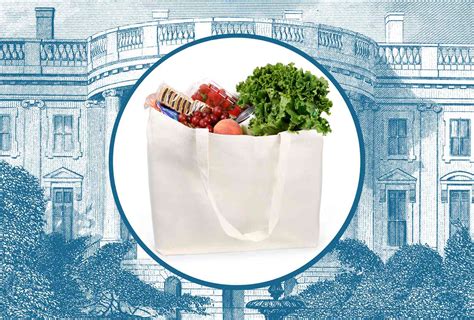
Vanilla ice cream, often relegated to a supporting role, has surprisingly emerged as a champion in a recent taste test, with Haagen-Dazs taking the top spot among 11 popular brands evaluated. Despite its seemingly simple flavor profile, the competition revealed the complexities and nuances that distinguish a truly exceptional vanilla ice cream.
Haagen-Dazs outperformed competitors like Van Leeuwen, Jeni’s, and even the budget-friendly favorite, Breyers, impressing judges with its rich, creamy texture and balanced vanilla flavor. According to Yahoo Lifestyle, the panel of taste testers meticulously assessed each brand based on factors such as flavor intensity, texture, and overall quality, ultimately crowning Haagen-Dazs as the victor. The results challenge the notion that vanilla is a basic or boring flavor, highlighting its potential for sophistication and indulgence when crafted with high-quality ingredients and expertise. This unexpected triumph underscores the importance of quality and craftsmanship in even the most seemingly straightforward culinary creations.
The comprehensive taste test conducted by Yahoo Lifestyle sought to identify the best vanilla ice cream available on the market. Eleven different brands were meticulously evaluated, ranging from premium, artisanal options to more accessible, mass-produced varieties. The goal was to determine which brand offered the most satisfying and authentic vanilla experience, considering the flavor, texture, and overall quality of the product. The panel of tasters consisted of individuals with a refined palate and an appreciation for the nuances of flavor, ensuring a fair and objective assessment. Each brand was judged blindly, eliminating any potential biases based on brand recognition or reputation.
Haagen-Dazs distinguished itself from the competition with its exceptional quality and attention to detail. The brand’s commitment to using high-quality ingredients, including real vanilla extract and fresh cream, resulted in a superior flavor and texture that set it apart from the rest. The tasters praised Haagen-Dazs for its rich, creamy consistency, which melted smoothly on the tongue and delivered a luxurious mouthfeel. The vanilla flavor was described as balanced and authentic, with a subtle sweetness that complemented the creamy base. Overall, Haagen-Dazs’s superior quality and attention to detail earned it the top spot in the taste test, solidifying its reputation as a leader in the ice cream industry.
While Haagen-Dazs emerged as the clear winner, other brands also received recognition for their unique qualities and flavor profiles. Van Leeuwen, known for its artisanal approach and unique flavor combinations, earned praise for its smooth texture and intense vanilla flavor. Jeni’s, another popular artisanal brand, was commended for its creative use of ingredients and innovative flavor combinations. Even Breyers, a more affordable and widely available option, received positive feedback for its classic vanilla flavor and creamy texture. The results of the taste test demonstrate that there is a vanilla ice cream for every palate and preference, with a wide range of brands offering unique and satisfying experiences.
The taste test also revealed some of the key factors that contribute to a truly exceptional vanilla ice cream. The quality of the ingredients, particularly the vanilla extract and cream, plays a crucial role in determining the flavor and texture of the final product. Real vanilla extract, derived from vanilla beans, imparts a complex and nuanced flavor that is far superior to artificial vanilla flavoring. Fresh cream, with its high fat content, contributes to a rich and creamy texture that is essential for a satisfying ice cream experience. The production process also plays a significant role, with slow churning and careful temperature control helping to create a smooth and consistent texture.
The results of the taste test challenge the perception of vanilla as a basic or boring flavor. When crafted with high-quality ingredients and expertise, vanilla ice cream can be a truly indulgent and satisfying treat. The complex flavor profile of real vanilla extract, combined with the rich and creamy texture of fresh cream, creates a sensory experience that is both comforting and sophisticated. The taste test highlights the importance of appreciating the nuances of flavor and recognizing the potential for excellence in even the most seemingly simple culinary creations. It underscores the fact that quality and craftsmanship can elevate a basic flavor like vanilla to something truly special.
The outcome of this taste test can significantly influence consumer choices in the ice cream market. With Haagen-Dazs being named the top choice, consumers seeking the best vanilla ice cream may be more inclined to purchase this brand. This preference could lead to increased sales and market share for Haagen-Dazs. Conversely, brands that did not perform as well may need to re-evaluate their recipes, ingredients, and production processes to improve their standing in future taste tests. The results also highlight the importance of transparency in labeling and ingredient sourcing, as consumers are increasingly interested in knowing where their food comes from and what it contains. Brands that prioritize quality and authenticity are more likely to resonate with consumers and gain a competitive advantage in the market.
Beyond individual consumer choices, the taste test also has broader implications for the food industry as a whole. It reinforces the importance of quality and craftsmanship in food production, demonstrating that even seemingly simple products can be elevated to new heights with attention to detail. The results also highlight the power of blind taste tests in providing objective and unbiased evaluations of food products. These types of tests can help consumers make informed decisions and encourage manufacturers to strive for excellence in their products. As consumers become more discerning and demand higher quality, taste tests and other forms of product evaluation will play an increasingly important role in shaping the food industry.
The broader context of the ice cream market reveals a dynamic and competitive landscape, with a wide range of brands vying for consumer attention. The market is segmented by price point, flavor profile, and production method, with options ranging from mass-produced, budget-friendly varieties to artisanal, small-batch creations. The growing demand for premium and gourmet ice cream has fueled the growth of artisanal brands, which often prioritize high-quality ingredients and unique flavor combinations. At the same time, established brands like Haagen-Dazs and Breyers continue to dominate the market with their classic flavors and widespread availability. The competitive landscape encourages innovation and product development, with brands constantly seeking new ways to differentiate themselves and appeal to consumers.
The history of vanilla ice cream is rich and fascinating, dating back to the early days of frozen desserts. Vanilla, derived from the vanilla orchid, was first cultivated by the Totonac people of Mexico and later adopted by the Aztecs. The Spanish conquistadors introduced vanilla to Europe in the 16th century, where it quickly became a prized flavoring ingredient. Vanilla ice cream emerged as a popular dessert in the 17th century, enjoyed by the wealthy and elite. Over time, as production methods improved and ingredients became more accessible, vanilla ice cream became a staple of the American diet. Today, it remains one of the most popular and beloved ice cream flavors in the world. Its enduring appeal lies in its versatility, simplicity, and comforting flavor, which evokes memories of childhood and summer days.
The process of making vanilla ice cream is relatively simple, but requires careful attention to detail and high-quality ingredients. The basic recipe typically includes cream, milk, sugar, and vanilla extract. The ingredients are combined and heated to dissolve the sugar, then chilled before being churned in an ice cream maker. The churning process incorporates air into the mixture, creating a smooth and creamy texture. The ice cream is then hardened in a freezer before being served. Variations on the basic recipe may include the addition of eggs, which contribute to a richer and more custardy texture. The quality of the vanilla extract is crucial, as it is the primary flavoring ingredient. Real vanilla extract, derived from vanilla beans, imparts a complex and nuanced flavor that is far superior to artificial vanilla flavoring.
The nutritional profile of vanilla ice cream varies depending on the brand and recipe. In general, vanilla ice cream is high in calories, fat, and sugar. It also contains some protein and calcium. The fat content is primarily saturated fat, which has been linked to heart disease. The sugar content can also be a concern, as excessive sugar consumption can lead to weight gain, tooth decay, and other health problems. However, vanilla ice cream can also be enjoyed in moderation as part of a balanced diet. Choosing brands that use high-quality ingredients and natural sweeteners can help to reduce the negative health impacts. Portion control is also important, as a small serving of vanilla ice cream can be a satisfying treat without contributing to excessive calorie or sugar intake.
The cultural significance of vanilla ice cream is undeniable, as it has become a symbol of comfort, nostalgia, and indulgence. It is often associated with childhood memories, summer vacations, and special occasions. Vanilla ice cream is a versatile dessert that can be enjoyed on its own or paired with a variety of toppings and sauces. It is also a popular ingredient in other desserts, such as milkshakes, sundaes, and ice cream cakes. Its popularity transcends cultural boundaries, as it is enjoyed by people of all ages and backgrounds around the world. The enduring appeal of vanilla ice cream lies in its simplicity and versatility, which allows it to be adapted to a wide range of tastes and preferences.
In conclusion, the Yahoo Lifestyle taste test has crowned Haagen-Dazs as the champion of vanilla ice creams, showcasing the brand’s commitment to quality and flavor. Despite its seemingly simple nature, vanilla ice cream offers a complex and nuanced flavor experience when crafted with high-quality ingredients and expertise. The results of the taste test highlight the importance of appreciating the nuances of flavor and recognizing the potential for excellence in even the most seemingly basic culinary creations. From its rich history to its cultural significance, vanilla ice cream continues to be a beloved and versatile dessert enjoyed by people of all ages and backgrounds around the world. The next time you reach for a scoop of vanilla ice cream, take a moment to appreciate the craftsmanship and quality that goes into creating this classic treat.
Frequently Asked Questions (FAQs)
-
What was the main outcome of the vanilla ice cream taste test?
The main outcome of the vanilla ice cream taste test was that Haagen-Dazs was identified as the best vanilla ice cream among the 11 brands tested. According to Yahoo Lifestyle, “Haagen-Dazs took the top spot”.
-
What criteria were used to evaluate the vanilla ice creams?
The taste testers evaluated each brand based on “factors such as flavor intensity, texture, and overall quality,” ensuring a comprehensive assessment of the vanilla ice creams.
-
Were there any other brands that received positive feedback during the taste test?
Yes, while Haagen-Dazs won, other brands like Van Leeuwen and Jeni’s received positive feedback, as well as the budget-friendly Breyers. Van Leeuwen was praised for its smooth texture and intense vanilla flavor, and Jeni’s was commended for its creative use of ingredients and innovative flavor combinations. Breyers received positive feedback for its classic vanilla flavor and creamy texture.
-
Why is vanilla considered a complex flavor, despite being seen as basic?
Vanilla is considered complex because real vanilla extract, derived from vanilla beans, contains a complex and nuanced flavor profile that is far superior to artificial vanilla flavoring. As explained in the source article, “The taste test highlights the importance of appreciating the nuances of flavor and recognizing the potential for excellence in even the most seemingly simple culinary creations.”
-
How might the results of this taste test influence consumer choices and the ice cream market?
The taste test results could influence consumer choices by prompting them to try Haagen-Dazs, which was named the best. This could lead to increased sales for Haagen-Dazs. It might also encourage other brands to improve their recipes and ingredients to compete better in future taste tests. The findings underscore the importance of quality and transparency in food production, potentially driving consumers to seek out brands that prioritize these aspects.
-
What is the significance of using real vanilla extract in ice cream?
Using real vanilla extract is crucial because it imparts a complex and nuanced flavor that cannot be replicated by artificial flavorings. Derived from vanilla beans, real vanilla extract provides a richer, more authentic taste that elevates the overall quality of the ice cream. The taste test highlighted that the quality of ingredients significantly impacts the final product.
- How does the texture of ice cream contribute to the overall tasting experience?
Texture plays a vital role in the ice cream tasting experience. A smooth, creamy texture enhances the mouthfeel, making the ice cream more enjoyable. Ice creams that are grainy or icy often lack the luxurious quality that consumers seek. Haagen-Dazs excelled in this aspect, with its rich, creamy consistency being a key factor in its victory.
- What impact does the fat content have on the quality of vanilla ice cream?
The fat content significantly influences the richness and creaminess of vanilla ice cream. Fresh cream, with its high fat content, contributes to a smoother, more decadent texture. Ice creams with lower fat content may lack the satisfying mouthfeel that consumers associate with premium products. The use of high-quality cream is a distinguishing factor for top-rated brands.
- How do artisanal ice cream brands like Van Leeuwen and Jeni’s differentiate themselves from mass-produced brands?
Artisanal ice cream brands differentiate themselves through their commitment to high-quality ingredients, unique flavor combinations, and small-batch production methods. They often focus on sourcing local or organic ingredients and experimenting with innovative flavor profiles that are not typically found in mass-produced brands. This approach allows them to create a premium product that appeals to consumers seeking a more unique and indulgent experience.
- What role does blind taste testing play in ensuring an objective evaluation of ice cream brands?
Blind taste testing eliminates potential biases based on brand recognition or reputation. By not knowing which brand they are tasting, panelists can focus solely on the flavor, texture, and overall quality of the ice cream. This ensures a fair and objective evaluation, allowing for a more accurate comparison of different brands.
- Why is vanilla ice cream considered a versatile dessert option?
Vanilla ice cream is considered versatile due to its neutral flavor, which pairs well with a wide variety of toppings, sauces, and other desserts. It can be enjoyed on its own or used as a base for sundaes, milkshakes, and ice cream cakes. Its adaptability makes it a popular choice for various culinary applications and personal preferences.
- How has the history of vanilla ice cream influenced its current popularity?
The rich history of vanilla ice cream, dating back to the early days of frozen desserts, has contributed to its enduring appeal. Its association with luxury and indulgence, combined with its simple yet comforting flavor, has made it a staple of the American diet. Over time, vanilla ice cream has evolved to meet changing consumer tastes while maintaining its classic appeal.
- What are some common variations on the basic vanilla ice cream recipe?
Common variations on the basic vanilla ice cream recipe include the addition of eggs, which create a richer and more custardy texture. Some recipes also incorporate different types of sweeteners, such as honey or maple syrup, to add unique flavor nuances. Others may experiment with different types of milk or cream to alter the texture and richness of the ice cream.
- What are the potential health implications of consuming vanilla ice cream regularly?
Regular consumption of vanilla ice cream can have potential health implications due to its high calorie, fat, and sugar content. Excessive sugar intake can lead to weight gain, tooth decay, and other health problems. The saturated fat content may also increase the risk of heart disease. However, vanilla ice cream can be enjoyed in moderation as part of a balanced diet.
- How can consumers make healthier choices when purchasing vanilla ice cream?
Consumers can make healthier choices by selecting brands that use high-quality ingredients, natural sweeteners, and lower fat content. Reading nutrition labels carefully and being mindful of portion sizes can also help to reduce the negative health impacts of consuming vanilla ice cream. Choosing organic or locally sourced options can also support sustainable and ethical food practices.
- In what ways does vanilla ice cream hold cultural significance?
Vanilla ice cream holds cultural significance as a symbol of comfort, nostalgia, and indulgence. It is often associated with childhood memories, summer vacations, and special occasions. Its widespread popularity transcends cultural boundaries, making it a universally beloved dessert. The versatility and simplicity of vanilla ice cream allow it to be adapted to various cultural tastes and preferences.
- What are the key steps involved in the process of making vanilla ice cream?
The key steps in making vanilla ice cream include combining cream, milk, sugar, and vanilla extract; heating the mixture to dissolve the sugar; chilling the mixture; churning the mixture in an ice cream maker to incorporate air; and hardening the ice cream in a freezer before serving. Careful temperature control and slow churning are essential for creating a smooth and creamy texture.
- How does the choice of vanilla extract impact the overall flavor of the ice cream?
The choice of vanilla extract has a profound impact on the overall flavor of the ice cream. Real vanilla extract, derived from vanilla beans, imparts a complex and nuanced flavor that is far superior to artificial vanilla flavoring. The quality and concentration of the vanilla extract will directly influence the intensity and authenticity of the vanilla flavor in the final product.
- What are some popular toppings and sauces that complement vanilla ice cream?
Popular toppings and sauces that complement vanilla ice cream include chocolate sauce, caramel sauce, hot fudge, fresh fruit, whipped cream, nuts, and sprinkles. The neutral flavor of vanilla ice cream makes it a versatile base for a wide variety of flavor combinations.
- How does the price point of vanilla ice cream influence consumer expectations and purchasing decisions?
The price point of vanilla ice cream often influences consumer expectations and purchasing decisions. Premium, artisanal brands tend to be more expensive due to their use of high-quality ingredients and small-batch production methods. Consumers who are willing to pay more may expect a more indulgent and unique flavor experience. More affordable brands may appeal to budget-conscious consumers who prioritize value over premium quality.









